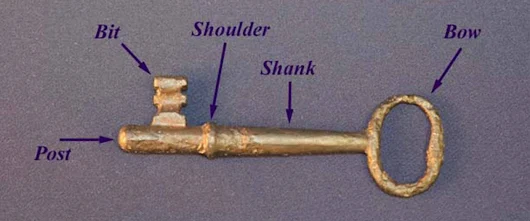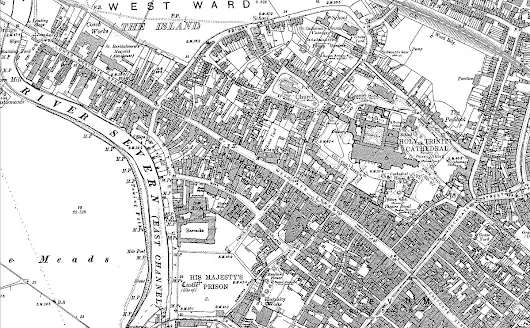Hundred of Westbury
In 1066 Westbury hundred included Westbury, Churcham, Longhope, Bulley, the estates of Stears, Hyde, and Ruddle in Newnham, and probably Blaisdon, as part of Longhope, and Minsterworth, containing a total of 50 hides. The Forest of Dean manors of Dean and English Bicknor, containing three hides and a half yardland, were recorded as part of Westbury hundred in 1086, but Dean had been granted by Edward the Confessor free of geld, for the keeping of the forest. By 1221 English Bicknor and Dean, by then divided into Mitcheldean, Littledean, and Ruardean, lay in St. Briavels hundred. Westbury hundred was further reduced in area by the 15th century when the estates of the Duchy of Lancaster in Bulley, Longhope, Minsterworth, and Westbury came to be regarded as a separate hundred.
In 1066 Tidenham and Lancaut had formed Tidenham hundred, amounting to 30 hides, while Woolaston had been divided between Lydney hundred, which included the two estates at Aluredston in Woolaston, and Twyford hundred, which consisted of only two estates at Woolaston and Madgett amounting to no more than five hides. Tidenham hundred is not found recorded after 1086, and apparently was merged with Twyford hundred by the mid 13th century. During Henry III's reign Twyford hundred, as part of the marcher lordship of Striguil, was withdrawn from the county. It had presumably by then absorbed Aluredston, since the lord of Striguil's liberty was said to stretch from the Cone brook, which formed the eastern boundary of Woolaston, to Chepstow Bridge.
Westbury hundred belonged to the Crown, the sheriff accounting for the profits of courts in 1169 and holding courts in the late 18th century. Twyford hundred was held by the Crown until granted to the Earl Marshal, lord of Striguil, by Henry III, and descended with Striguil until its inclusion in Westbury in 1536.
No records of the Westbury hundred court have been found. In 1169 an income of 20s. was received from the court and in 1247 the jurors presented that the hundred was worth 2 marks a year. The court met every three weeks early in the 14th century. In common with the other hundreds west of the River Severn no Englishry was presented or murdrum fine due from the hundred in the 13th century.
The perquisites of the manor of Tidenham and hundred of Twyford were worth £68 8s. 3½d. in 1248, and in the late 13th century the reeve of Tidenham regularly accounted for pleas and perquisites of the manor and hundred courts.
In Westbury hundred the borough of Newnham was exempted from the hundred in the late 12th century, and in 1286-7 Edmund, Earl of Lancaster, claimed view of frankpledge, vetitum namium, and assize of bread and ale in his manors of Rodley and Minsterworth, which were exempt from all suits of shire and hundred.
The hundred meeting place cannot be identified with any certainty, but Malsdon in Bollow tithing in Westbury may have been the medieval site. The name of Twyford hundred is retained in a corrupt form as Wyvern Pond in Woolaston.
The parishes within the hundred lie in two groups west of the Severn on the relatively low ground between the tidal river and the higher land of the Forest of Dean and May Hill. The northern part of the hundred between Gloucester and Newnham is gently rolling, lowlying land which rises in only a few places more than 100 feet above sea level and is subject to seasonal flooding of meadows along the river and at Walmore in Westbury. Only in the western parts of Blaisdon and Newnham does the Keuper Marl and Lower Lias of the river basin give way to the Silurian limestones and shales and the Old Red Sandstone as the land rises steeply to the wooded hills adjoining the Forest of Dean. The southern part of the hundred containing Tidenham and Woolaston is of a different character. There is only a narrow belt of level riverside land formed of the Keuper Marl, and both parishes have a large proportion of hilly, wooded, and waste land which was chiefly within the medieval Tidenham Chase. Most of the Carboniferous Limestone plateau lies over 500 feet above sea level with cliffs up to 200 feet high dropping abruptly to the River Wye.
The settlements within the area are scattered, and apart from the former borough of Newnham the only nucleated villages are the small ones of Blaisdon and Westbury-on-Severn. There are numerous hamlets and isolated farms bearing witness to the lengthy process of clearing woodland; Welsh influence is recalled in the medieval place names of Walmore and Welchbury in Westbury, and Walleston in Newnham.
The River Severn, which in 1970 was not bridged between Gloucester and Chepstow and therefore formed a barrier to communication, was formerly of great economic importance to the hundred. Newnham had a thriving trade as a port, chiefly with towns up river, Bristol, and Ireland; there were other landing places at Cone Pill, Bullo Pill, and Broadoak, important ferries at Beachley and Newnham, and a number of lesser crossings; there was also considerable river traffic between the Wye valley and Bristol. Boat building and salmon and shrimp fishing were carried on extensively until the 19th century.
Much of the hundred formerly lay within the boundaries of the Forest of Dean, which at its most extensive in the 12th and 13th centuries included all or the greater part of the parishes in the hundred, but from 1300 the forest was usually more narrowly defined to exclude the whole hundred. There is evidence of widespread medieval assarting in Tidenham and Woolaston, but Tidenham Chase was not inclosed until 1815. Open fields existed in all the parishes and were mostly inclosed by a gradual process between the 15th and early 19th centuries.
http://www.british-history.ac.uk/vch/glos/vol10/pp1-5
Newnham: Manors
http://www.british-history.ac.uk/vch/glos/vol10/pp36-40
Churcham: Manors and other estates
http://www.british-history.ac.uk/vch/glos/vol10/pp17-21
Tidenham including Lancaut: Manors and other estates
http://www.british-history.ac.uk/vch/glos/vol10/pp62-68
Westbury-on-Severn: Manors and other estates
http://www.british-history.ac.uk/vch/glos/vol10/pp85-93
Woolaston: Manor and other estates
http://www.british-history.ac.uk/vch/glos/vol10/pp106-109
Search: St. Briavels Hundred
http://www.british-history.ac.uk/search?query=st%20briavels%20hundred
https://plus.google.com/103755316640704343614/posts/F2NzWPbjEVH
https://en.wikipedia.org/wiki/List_of_hundreds_of_England_and_Wales#Gloucestershire
Wardens of the Forest and Constables of St. Briavels
http://www.british-history.ac.uk/vch/glos/vol5/pp413-415














